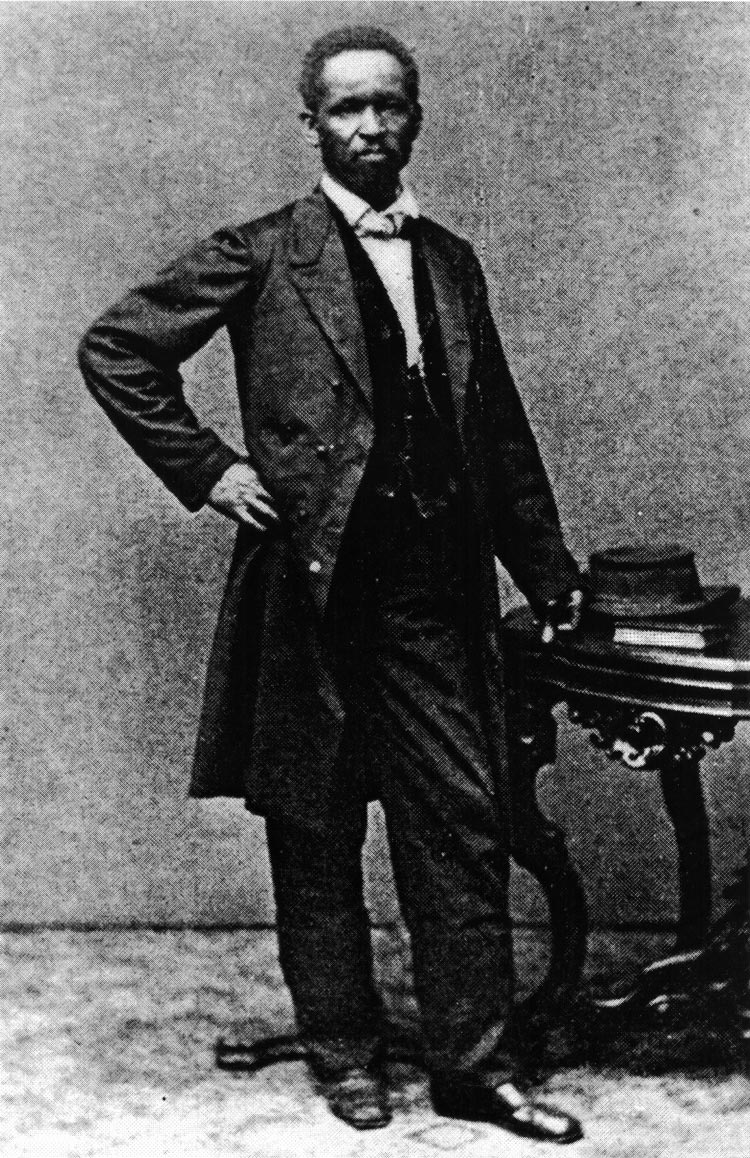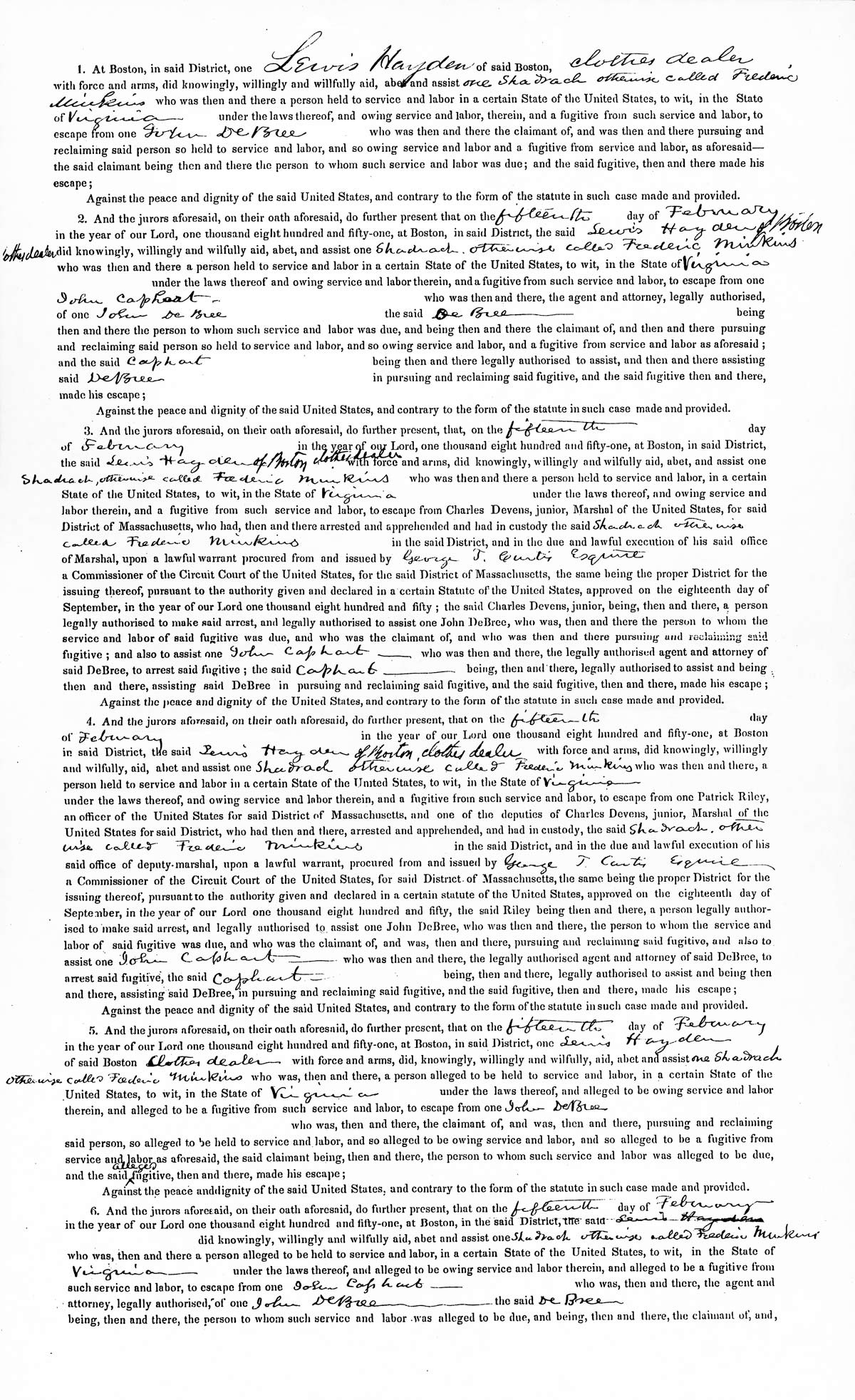
The Ordeal of Shadrach Minkins
On Saturday morning, February 15, 1851, two officers posing as customers at Taft’s Cornhill Coffee House, on the authority of the federal Fugitive Slave Act of 1850, seized the waiter Shadrach Minkins, a “stout, copper-colored man,” who had escaped from slavery in Virginia and settled in Boston. Minkins was taken to the nearby courthouse for a hearing. Robert Morris, Richard Henry Dana, Jr., Ellis Gray Loring, and Samuel E. Sewall offered their services as Minkins’ counsel.
Soon after Lemuel Shaw, Chief Justice of the Supreme Judicial Court of Massachusetts, refused to consider the defense’s habeas corpus petition, a crowd of black and white abolitionists entered the courthouse, overcame armed guards, and forced their way into the courtroom. In a chaotic struggle, black abolitionists wrested Minkins from his court officers, carried him off and temporarily hid him in a Beacon Hill attic. From there, Boston black leaders Lewis Hayden, John J. Smith and others helped Minkins escape from Massachusetts. He eventually found his way to Canada on the Underground Railroad. Nine abolitionists, including Robert Morris, the second African American lawyer admitted to practice in Massachusetts, were indicted and tried for treason for their role in this escape.


 Back
Back Print
Print